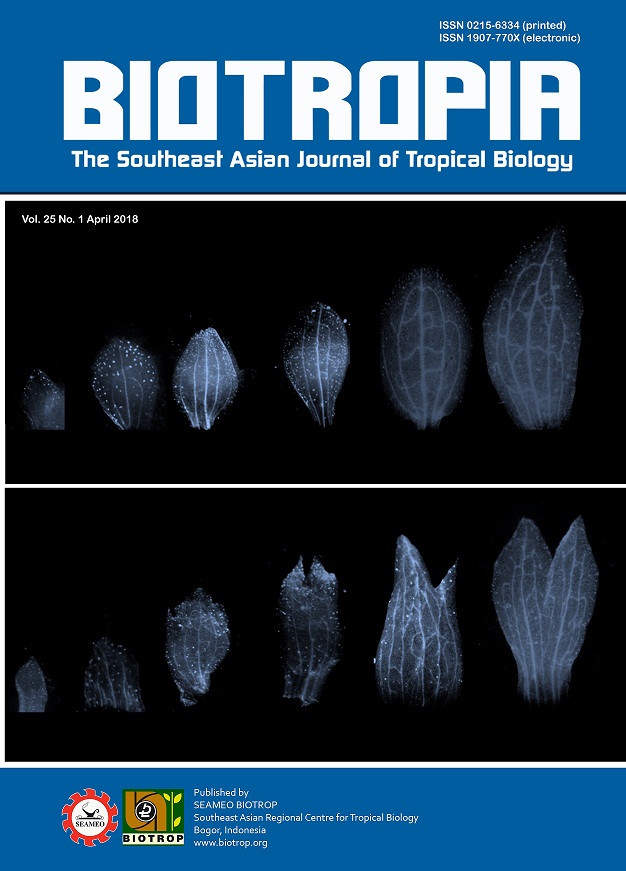
Tags
LIGHT-COLOR-INDUCED CHANGES IN FATTY ACID BIOSYNTHESIS IN Chlorella sp. STRAIN KS-MA2 IN EARLY STATIONARY GROWTH PHASE
Content Language : English

Optimization of light supply remains a critical issue in microalgae biotechnology. The impacts of light color on fatty acid production and biosynthesis in microalgae are poorly understood. The aim of this study was to determine the effect of light color on growth and fatty acid content in Chlorella strain KS-MA2. Cells were cultured on F/2 medium and incubated under blue, green, red or white light. The cells’ growth, fatty acid composition and the expression levels of the ketoacyl synthase 1 (KAS-1), omega-6 desaturase (ω-6 FAD) and omega-3 desaturase (ω-3 FAD) genes were measured at the early stationary growth phase. Results of this study indicated that light color affected cell density and fatty acid profile produced by Chlorella sp. strain KS-MA2. Cells cultured under blue, red and white light had higher cell density than those cultured under green light. Palmitic acid (38.62 ± 3.29% of biomass dry weight) and linolenic acid (7.96 ± 0.88% of biomass dry weight) were highly accumulated under white light. Stearic acid was dominant under blue light (11.11 ± 0.14% of biomass dry weight), whereas oleic acid was dominant under red light (30.50 ± 0.14% of biomass dry weight). Linoleic acid was highly produced under green and blue light (28.63 ± 1.36% and 26.00 ± 0.81 % of biomass dry weight, respectively). KAS-1 and ω-6 FAD were highly expressed under blue light, whereas ω-3 FAD was highly expressed under green light. The production of particular fatty acids of interest from Chlorella could be achieved by shifting color of light used during the incubation of the cell cultures. Blue-light is the most suitable light color for producing biomass and stearic acid by Chlorellastrain KS-MA2.
Link

This work is licensed under a Creative Commons Attribution-NonCommercial-NoDerivatives 4.0 International License.
